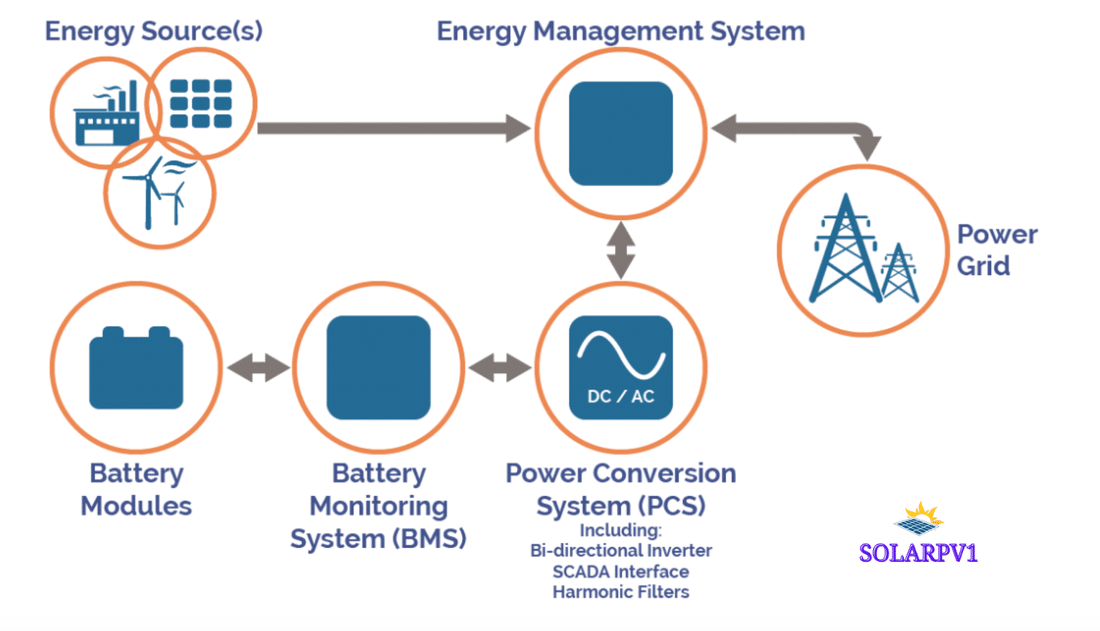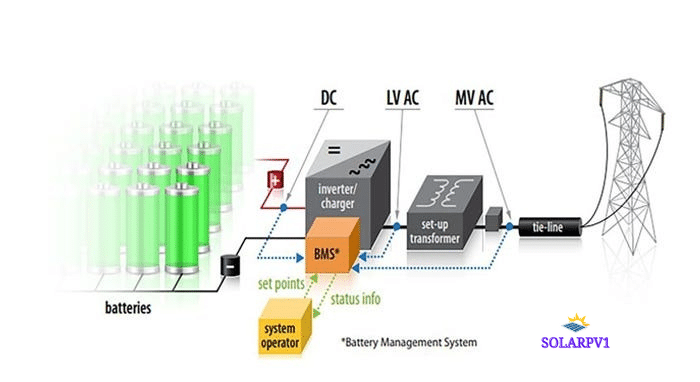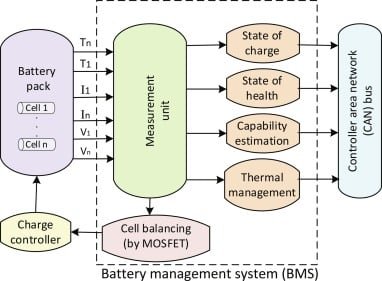Introduction to Understanding Battery Management System BMS in BESS
Battery Energy Storage Systems (BESS) are essential components in modern energy management, providing solutions that enhance the efficiency and reliability of electrical systems. As the demand for sustainable energy solutions increases, BESS plays a pivotal role in the integration of renewable energy sources, such as wind and solar, which are inherently variable. By storing excess energy generated during peak production times, these systems ensure that electricity is available when demand surpasses supply, thus enhancing energy resilience.
The significance of BESS extends beyond mere energy storage; it is crucial for grid stability. As traditional energy grids evolve into more decentralized structures, the role of BESS becomes increasingly important. These systems help in balancing supply and demand, mitigating fluctuations in energy generation, and providing backup power during outages. Effective energy management is essential as more consumers adopt renewable resources, which often lead to unpredictability in energy availability.
A typical BESS comprises several key components, including batteries, inverters, and control systems. Batteries serve as the primary storage medium, capturing energy for later use, while inverters convert direct current (DC) from the batteries into alternating current (AC), enabling its integration with the electric grid. Control systems monitor and optimize the operation of the entire system, ensuring the best performance based on real-time data and changing energy demands.
As the world shifts toward more sustainable practices, understanding the purpose and functionality of Battery Energy Storage Systems becomes critical. Their ability to harness renewable energy effectively positions them as vital assets in creating a more resilient and sustainable energy future.
What is a Battery Management System (BMS)?
A Battery Management System (BMS) is an essential component in Battery Energy Storage Systems (BESS), tasked with overseeing and managing the operation of battery cells. The primary functions of a BMS encompass monitoring, balancing, and protecting the battery cells to guarantee optimal performance and safety throughout the battery’s lifecycle. By performing these functions, a BMS plays a pivotal role in enhancing the efficiency, safety, and longevity of batteries used in various applications.

Additionally, the balancing function of the BMS is crucial for optimizing the performance of the battery pack. Since battery cells may have slight variations in capacity and internal resistance, these disparities can lead to inefficient charge and discharge cycles. The BMS reduces these imbalances by redistributing energy among the cells, thus ensuring uniform performance and maximizing the overall energy capacity of the system.
Protection mechanisms integrated within the BMS are designed to safeguard both the battery cells and the overall system. By implementing fail-safes and cutoff systems, the BMS can prevent scenarios that may lead to battery damage or catastrophic failure. This protective function is essential to maintain the integrity of the battery pack and to provide users with peace of mind regarding the safety of their energy storage systems.
Key Features and Functions of BMS
A Battery Management System (BMS) plays a crucial role in the effective functioning of Battery Energy Storage Systems (BESS). One of its primary functions is cell balancing, which ensures that all cells within a battery pack have similar charge levels. This is critical because imbalances can lead to overcharging or excessive discharging in certain cells, creating the risk of battery failure. By employing active or passive cell balancing techniques, the BMS helps to optimize battery life and performance by redistributing energy between cells, thus extending the overall lifespan of the battery pack.
Another critical feature of a BMS is state of charge (SOC) estimation. SOC is a measure of the current charge level of the battery relative to its capacity. Accurate SOC estimation is necessary to prevent situations where the battery is either overcharged or undercharged. The BMS uses various algorithms and measurement techniques to calculate SOC, which informs users about the remaining energy and aids in decision-making regarding energy deployment or storage. This capability is essential for maintaining the reliability and efficiency of the BESS.
Thermal management is another vital function of a BMS. Batteries generate heat during charging and discharging, which can adversely affect performance and safety. A well-designed BMS incorporates thermal management strategies that monitor temperature and control the thermal environment of the battery pack. By implementing cooling systems or heat dissipation methods, the BMS ensures that the battery operates within the optimal temperature range, thereby enhancing safety and performance.
Lastly, communication protocols are integral to the functionality of a BMS. These protocols enable real-time data exchange between the BMS and other components of the energy storage system. By utilizing standard communication interfaces, the BMS can relay crucial information regarding battery health, charging cycles, and performance metrics to external systems for monitoring and control. This interconnectedness supports effective management and integration of the battery system within a sustainable energy framework.
Future Trends in BMS for BESS
The landscape of Battery Management Systems (BMS) within Battery Energy Storage Systems (BESS) is evolving rapidly, driven by advancements in technology and the pressing need for sustainable energy solutions. One significant trend is the increasing integration of artificial intelligence (AI) and machine learning. These technologies are being leveraged to enhance the predictive capabilities of BMS, allowing for real-time analysis of battery performance and health. By analyzing extensive data sets, AI can optimize charging and discharging cycles, ultimately prolonging battery life and improving overall efficiency. This not only reduces operational costs but also aids in achieving more reliable energy storage solutions.
Another important trend is the ongoing developments in battery chemistry. The adoption of lithium-sulfur and solid-state batteries presents opportunities for improving energy density and safety, thereby making BESS more attractive for commercial and residential applications. Improved battery chemistries often come with unique challenges around management, necessitating advanced BMS configurations that can handle the intricacies of these new technologies. A modern BMS must be adaptable and able to interface seamlessly with various battery types, ensuring maximum performance and reliability across a range of applications.
Innovative BMS architectures are also on the rise. Modular and distributed BMS designs are being increasingly explored, allowing for greater scalability and flexibility in system deployment. Such architectures enable easier maintenance and upgrading, contributing to lower overall lifecycle costs. The implications of these advancements for the energy market are significant, as they will likely lead to wider adoption of BESS technologies. With the move towards decarbonization and renewable energy integration, an efficient and sophisticated BMS will play a crucial role in ensuring that energy storage systems can meet the growing demands of a sustainable future.


